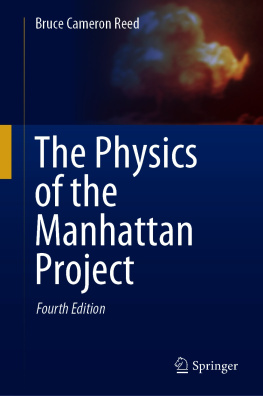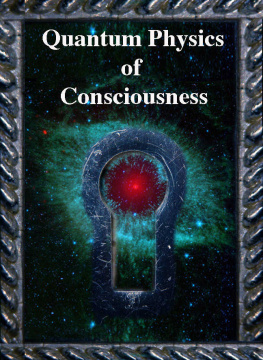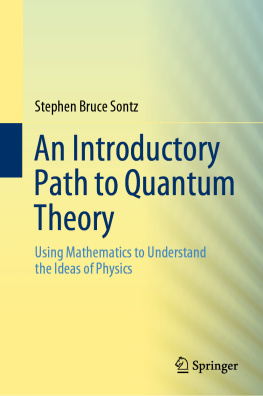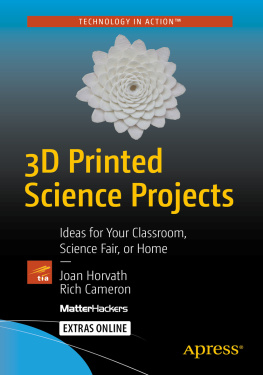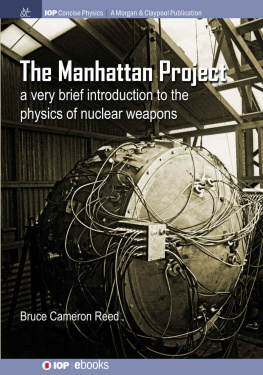Bruce Cameron Reed - The Physics of the Manhattan Project
Here you can read online Bruce Cameron Reed - The Physics of the Manhattan Project full text of the book (entire story) in english for free. Download pdf and epub, get meaning, cover and reviews about this ebook. year: 2021, publisher: Springer International Publishing, genre: Romance novel. Description of the work, (preface) as well as reviews are available. Best literature library LitArk.com created for fans of good reading and offers a wide selection of genres:
Romance novel
Science fiction
Adventure
Detective
Science
History
Home and family
Prose
Art
Politics
Computer
Non-fiction
Religion
Business
Children
Humor
Choose a favorite category and find really read worthwhile books. Enjoy immersion in the world of imagination, feel the emotions of the characters or learn something new for yourself, make an fascinating discovery.
- Book:The Physics of the Manhattan Project
- Author:
- Publisher:Springer International Publishing
- Genre:
- Year:2021
- Rating:3 / 5
- Favourites:Add to favourites
- Your mark:
- 60
- 1
- 2
- 3
- 4
- 5
The Physics of the Manhattan Project: summary, description and annotation
We offer to read an annotation, description, summary or preface (depends on what the author of the book "The Physics of the Manhattan Project" wrote himself). If you haven't found the necessary information about the book — write in the comments, we will try to find it.
The Physics of the Manhattan Project — read online for free the complete book (whole text) full work
Below is the text of the book, divided by pages. System saving the place of the last page read, allows you to conveniently read the book "The Physics of the Manhattan Project" online for free, without having to search again every time where you left off. Put a bookmark, and you can go to the page where you finished reading at any time.
Font size:
Interval:
Bookmark:
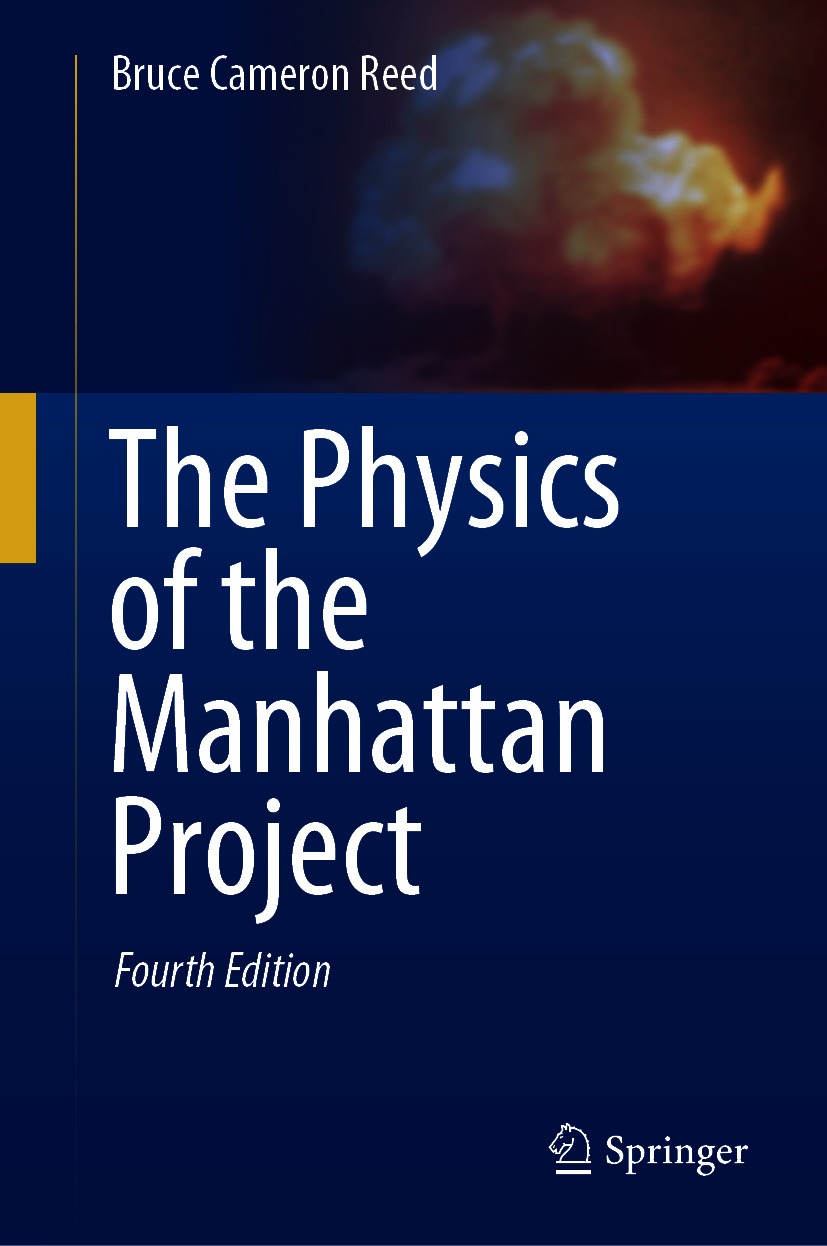

This Springer imprint is published by the registered company Springer Nature Switzerland AG
The registered company address is: Gewerbestrasse 11, 6330 Cham, Switzerland
This work is dedicated to my wife Laurie, whose love knows no half-life.
To readers who have purchased this and possibly earlier editions of this book, I thank you. Your support, suggestions, comments, and criticisms have made each edition better than the preceding one. This will likely be the final edition of The Physics of the Manhattan Project, and it incorporates a number of revisions, various new graphs, four new sections, updated data, and clarifications and corrections of a number of points. These revisions reflect my own increased knowledge of the subject matter and a number of helpful suggestions contributed by readers who took time to contact me.
Fundamental data on the Little Boy and Fat Man bombs are now gathered into a Preamble.
In Sect. , the discussion of the number of fission-liberated neutrons above a given energy threshold has been clarified.
The discussion of the fission barrier in Sect. has been revised to bring it closer to Bohr and Wheelers original analysis. Updated data on fission barriers has been incorporated throughout the book.
The discussion of tamped criticality in Sect. discusses composite tamped cores, that is, ones comprising shells of two different fissile materials enclosed within a tamper.
Numerical simulations of the Little Boy and Fat Man bombs (now Sect. ) incorporate improved physical modeling and updated information on real core and tamper masses.
Section is also new, comprising four subsections on approximate methods of estimating critical masses and yields. These methods are less rigorous than their counterparts in the preceding sections of this chapter but are intended for use in a classroom setting where time restrictions may not permit a fuller development.
Section on plutonium production has been simplified and clarified.
Section on boron contamination in graphite has been significantly revised to correct some errors in previous editions.
Confusing statements in Sect. on predetonation yield have been clarified.
Section , also new, describes the physics of the neutron initiators that were developed during the Manhattan Project to trigger Little Boy and Fat Man.
Section , also new, investigates the amusing claim that the energy of fission can make a grain of sand visibly jump.
The fact that you are reading this indicates that you appreciate that the discovery of nuclear energy and its liberation via nuclear weapons was one of the pivotal events of the twentieth century. The strategic and military implications of this development drove much of cold-war geopolitics for the last half of that century, and remain with us today in the form of weapons stockpiles and deployments, proliferation, fissile-material security concerns, test-ban treaties, and concern with the possibility that terrorists or unstable international players might be able to acquire enough fissile material to assemble a crude nuclear weapon. For better or worse, stabilizing or destabilizing, the legacies of the United States Armys Manhattan Engineer District, Los Alamos, Oak Ridge, Hanford, Trinity, Little Boy, Fat Man, Hiroshima, and Nagasaki will continue to influence events for decades to come, even as the number of deployed nuclear weapons in the world declines.
To sensibly assess information and claims regarding these concerns, one needs some knowledge of the physics that backgrounds nuclear weapons. Should you be merely concerned or downright alarmed if you learn that a potential adversary country is enriching uranium to 20% 235U or developing fuel-rod reprocessing technology? Why is there is such a thing as a critical mass, and how can one estimate it? How does a nuclear reactor differ from a nuclear weapon? Why cant a nuclear weapon be made with a common metal such as aluminum or iron as its active ingredient? How did the properties of various uranium and plutonium isotopes lead to the development of the gun and implosion weapons used at Hiroshima and Nagasaki? How did the developers of those devices estimate their expected energy yields? How can you arrange to assemble a critical mass in such a way as to avoid blowing yourself up beforehand? This book is an effort to address such questions at about the level of a junior-year undergraduate physics student.
This work grew out of three courses that I taught at Alma College, supplemented with information drawn from a number of my own and other published research articles. One of the courses was a conventional undergraduate sophomore-level modern physics class for physics majors which contained a unit on nuclear physics. Another was an algebra-level general-education class on the history of the making of nuclear weapons in World War II, and the third was a junior-level topics class for physics majors that used much of the present volume as its text. What originally motivated this book was that there seemed to be no one source available for a reader with a college-level background in physics and mathematics who desired to learn something of the technical aspects of the Manhattan Project in more detail than is typically presented in conventional texts or popular histories. As my own knowledge of these issues grew, I began assembling a collection of derivations and results to share with my students, and which evolved into the present volume. I hope that readers will discover, as I did, that studying nuclear weapons is not only fascinating in its own right, but is an excellent vehicle for reinforcing understanding of many foundational areas of physics such as energy, electromagnetism, dynamics, statistical mechanics, modern physics, and, of course, nuclear physicsas well as their attendant mathematical techniques.
Font size:
Interval:
Bookmark:
Similar books «The Physics of the Manhattan Project»
Look at similar books to The Physics of the Manhattan Project. We have selected literature similar in name and meaning in the hope of providing readers with more options to find new, interesting, not yet read works.
Discussion, reviews of the book The Physics of the Manhattan Project and just readers' own opinions. Leave your comments, write what you think about the work, its meaning or the main characters. Specify what exactly you liked and what you didn't like, and why you think so.

